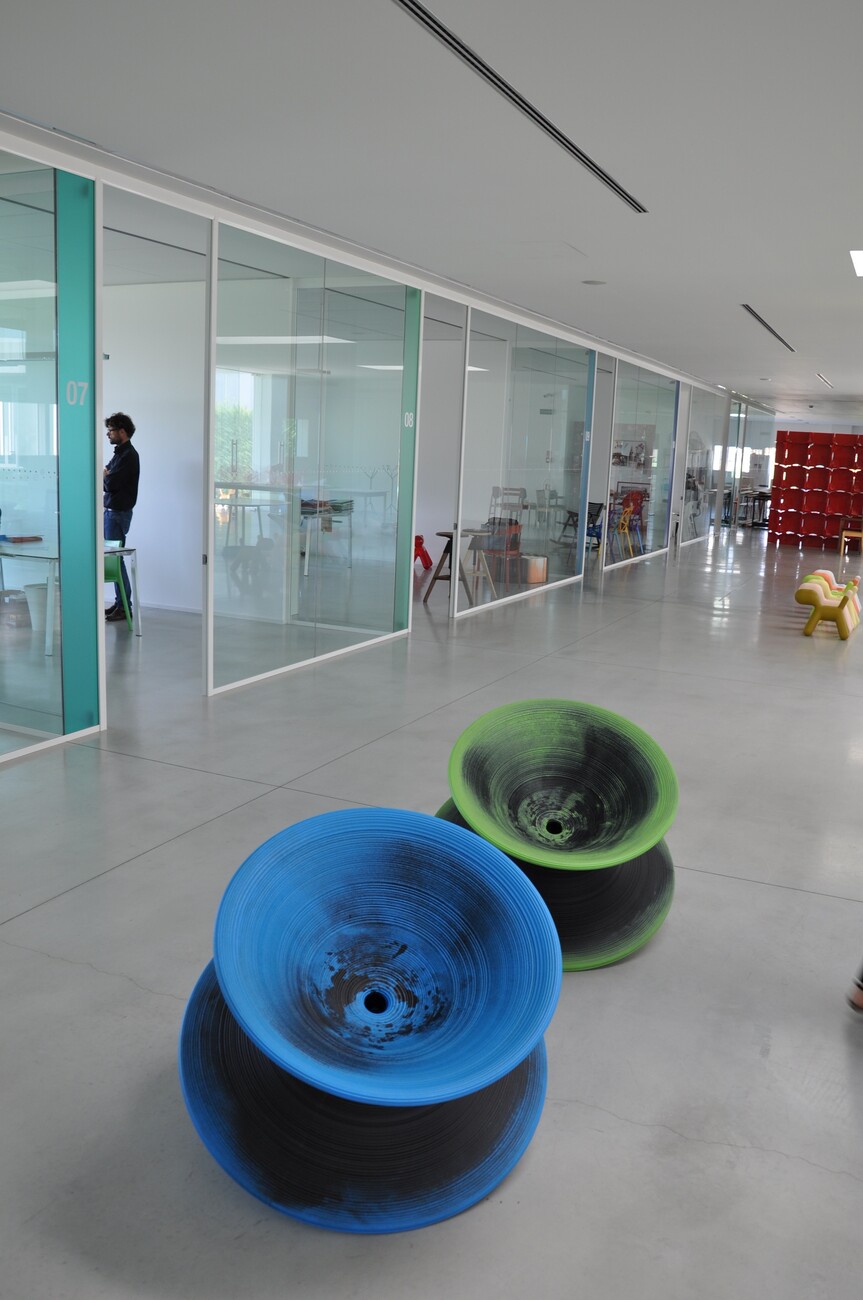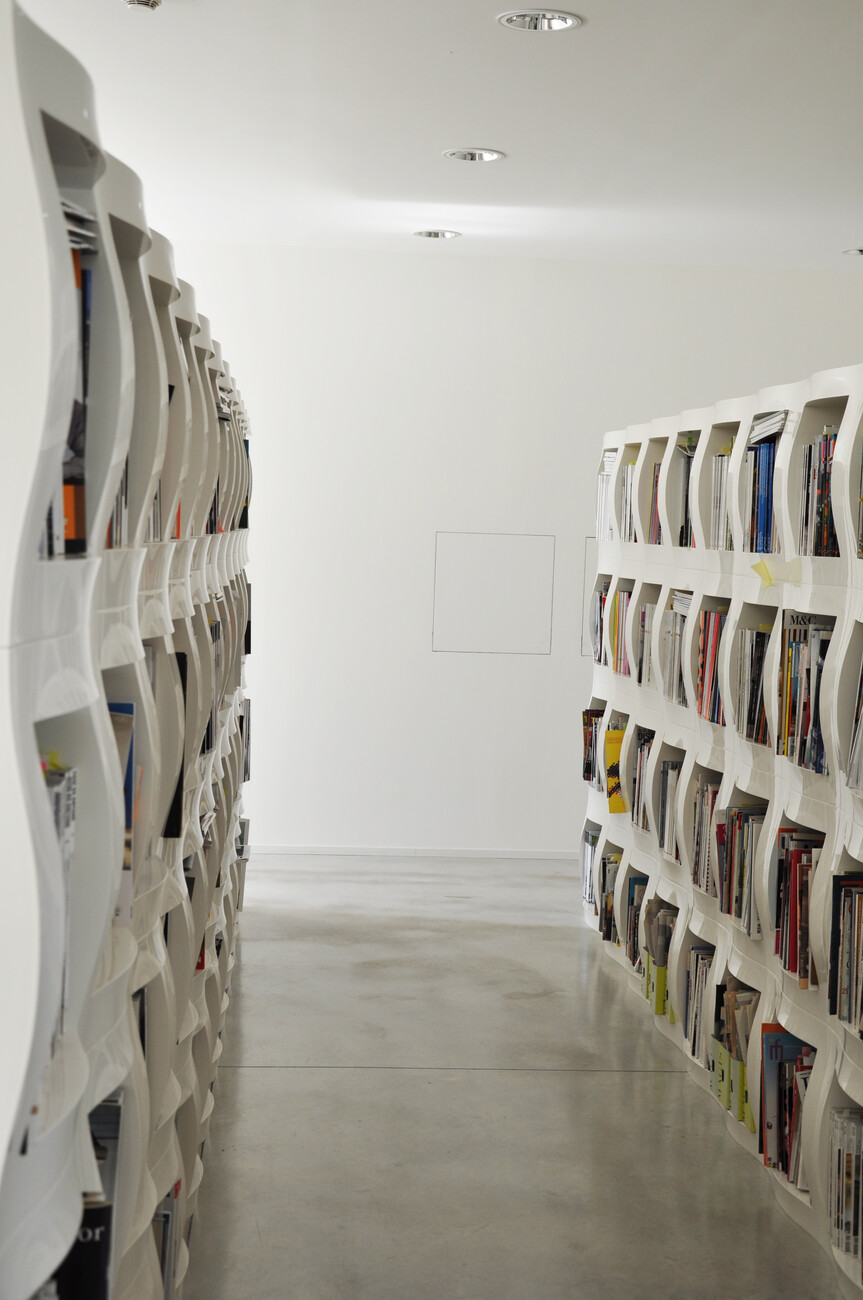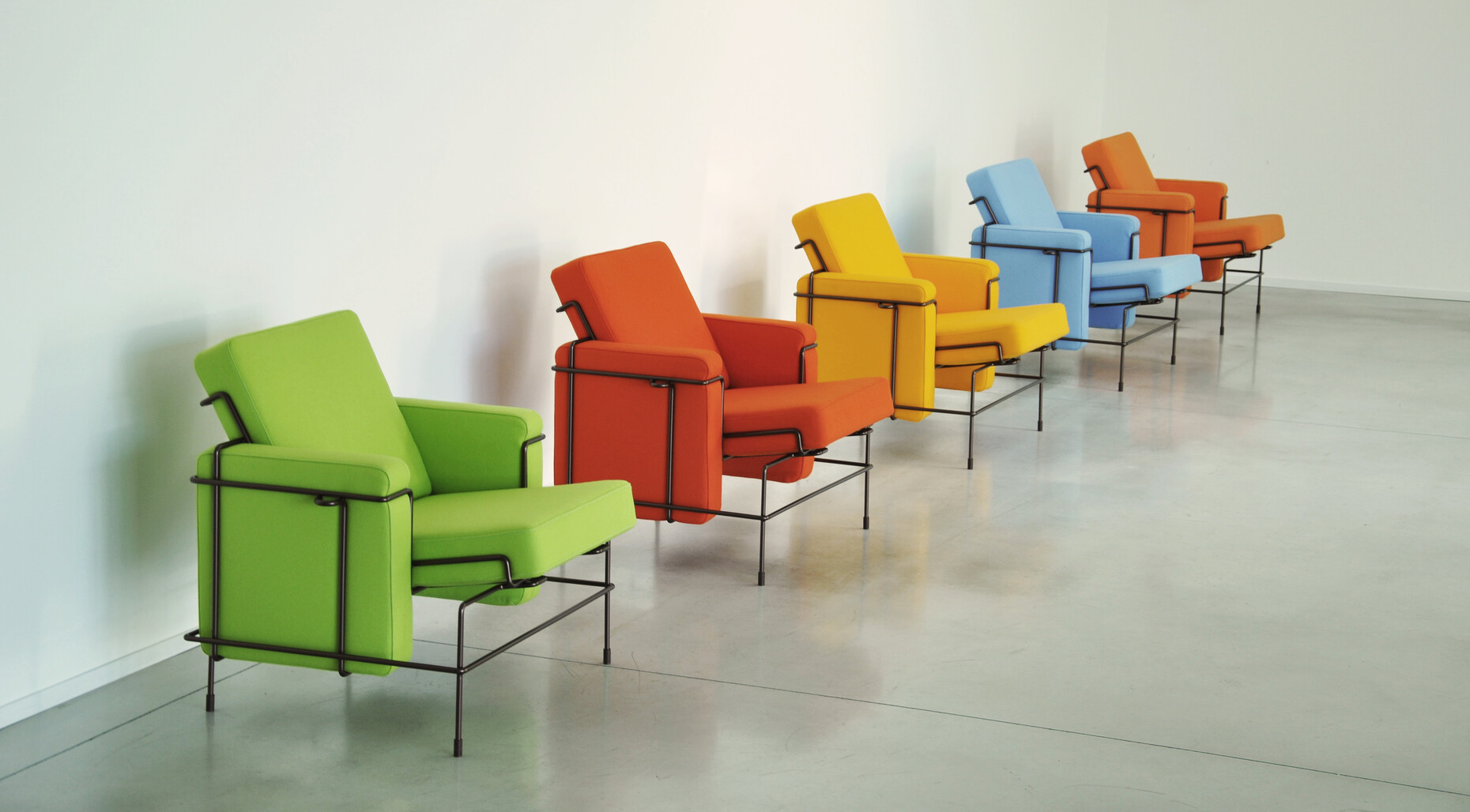STYLEPARK MAGIS
Questioning the conventional
On the occasion of the 40th anniversary of Italian design brand Magis, what immediately catches the eye is the tenacity and thirst for innovation that has enabled the company to emerge as a leader in furniture design in a comparatively short space of time. Back in 1976, when the company was founded, the mood in Europe and in Italy was anything but one of enthusiastic new beginnings. Fierce political controversies and environmental crises shaped public debate of the day. At the same time, a search for changed concepts gained momentum: designers turned their backs on traditional products and hunted for alternatives.
Building on ideas
Not a time to develop a company with visionary furniture concepts? Born in 1940, Eugenio Perazza was not deterred by any of this. Unlike one or the other other Italian design company, the history of Magis does not derive from traditional artisanal operations that were then turned into an industrial outfit. What a company makes and what it stands for are things that first evolved in the entrepreneur’s mind. Perazza had previously worked in the export department at household goods manufacturer that simply copied successful products. Perazza tried to persuade the managing director to grow the company further. He invited Richard Sapper to design wire furniture for the contract market. However, the managing director did not like the idea. And he did not want to and had no interest and were not interested to engage in research or work with designers. Yet, in a changed world, so Perazza felt, this was imperative. So he quit, and with minimal seed capital started up his own company: Magis.
It all started with household objects
Today, the folding side table “Trio” looks fairly unspectacular. The bright yellow tubular steel boasts black folding bellows to adjust the height. The round top and legs can be folded flat for easy storing. The same could be said of the other practical household items made of metal and plastic that initially typified the company’s product range. They are easy to use, handsome, and fold flat storage. Among them were the stepladders such as the “Nuovastep” (design: Andries & Hiroko Van Onck) and “Flò” or “Amleto” ironing board. Magis is not the spokesman for counter-design, as in terms of focus, the products are too much a matter of user-oriented common sense. Ere long, Magis products were popping up in sci-fi movies, for example in 2001 in Steven Spielberg’s “A.I. Artificial Intelligence”, as the contemporary formal vocabulary pointed towards the future.
Question the conventional
Eugenio Perazza’s personal trademark is his glasses, often pushed up on his forehead, as if not just his eyes needed support in seeing clearly but also the keen mind behind the forehead. Perazza knows designers of all generations. He discovered and fostered new talents such as Jerzy Seymour, Jean-Marie Massaud or Michael Young and was in regular contact with design masters like Charlotte Perriand and Pierre Paulin. Eero Aarnio, Enzo Mari, Marc Newson, Richard Sapper, Werner Aisslinger, James Irvine and many others have all worked for him. We have Eugenio Perazza’s tenacity to thank for the fact that many world-famous designers have created some of their best pieces for Magis – irrespective of whether they were at the beginning of their careers or already well established. Magis’s internal design team, who are intergral partners in the design process, examines each designer’s ideas critically and constructively. Both sides benefit and the results are better products. Perazza sends designers who seek him out at trade fairs to show him a new design packing with the words: If you want to make a chair for the company then it will at the very least have to be good enough to question all the all other Magis chairs. “If you simply want to make a beautiful chair, then go somewhere else.” Other businessmen would perhaps treat this as arrogance. However, Norwegian designers Anderssen & Voll, whose bar stool “Tibu” successfully took on all the earlier models, took his sharp remark cheerfully as a welcome challenge and tell the story in the small jubilee book “40 Magis”.
Looking for something special
Film director Ernst Lubitsch is reputed to have said that at the beginning of every new project he always asked himself: “How would this normally be done?” – in order to go on to ask: “So how can we do it differently?”. A movie-lover Perazza (favorite film: Zoltán Korda’s “The Four Feathers”) takes a similar approach: “From the outset the focus must be on getting something extra out of the project, by way of a unique selling point.” He cannot afford, he says, to include in his collection objects by renowned designers that they’ve already done in a similar vein for other companies. This also applies to Philippe Starck, whose initial enquiry whether Perazza would be interested in collaborating was met with a “let me think it over”. After all, he didn’t simply want one of the customary plastic furniture items Starck had already designed for countless makers. The result of the mutual thinking led to ecologically justifiable plastic chair: “Zartan”.
This approach spells a special challenge for all the designers who work for Magis and which they, if one believes to their statements in the small red jubilee volume, find decidedly appealing.
The first milestones in the 1990s were Stefano Giovannoni’s “Bombo”, an organically shaped bar stool that was later expanded into an entire furniture line. Or Jasper Morrison’s “Air-Chair”: the reinforced polypropylene chair was the first to be made in a single piece using a gas injection process. During the injection molding, the liquid plastic is squeezed into the mold by gas. The result is a stable structure with a hollow body, enabling less use of materials, less weight, and shorter production times.
Self-quotations are forbidden
Because Magis acts like a commissioning agent, bringing together technologies, workshops and production partners, instead of always relying on the same technology, and because the whole corporate organism is forever wanting something new, looking for the next challenge, the new products never quote the company’s prior models. This also explains why for many years Magis was not seen as an overall concept but as a collection of highlights. To this day, the company is only very occasionally to be found in the countless overview exhibitions and summary catalogues that forever dissect and evoke Italian design in new contexts. You will look in vain for Magis flagship stores and other usual trappings of global brand image. “Me too” is inconceivable at Magis, or only as the name of the company’s collection of children’s furniture. The only constant: the interaction of Perazza’s will power, knowledge, and discerning judgment when it comes to all aspects of innovation: form, production technology and materials.
No patience, no Chair One
Blending all these ingredients does not automatically generate the desired result, as Perazza and Konstantin Grcic found out while developing “Chair One”. When the entrepreneur suggested to the designer that die-cast aluminum be used for the chair, Grcic decided not to use it for the usual base-frame but for the entire basket-like structure of the chair. Years passed from the first public presentation of the idea through to production in 2003. This clear patience bore fruit: the highly successful project (originally “Chair One” was intended for waiting areas and outdoors, but soon found its way into apartments and offices worldwide) – and forged a strong link between the entrepreneur and the designer. In the jubilee book, Grcic speaks of Perazza as “without doubt my favorite, closest and most inspiring ally in the industry.” The fact that Perazza fearlessly looks to the future and seeks new projects, adventures and challenges, is something designers like Grcic or Ronan and Erwan Bouroullec really like about him. At the same time, at least metaphorically they are members of the international Magis community. This company is also a kind of family (and vice versa), even if this verges on a cliché when the talk is of Italy. In the case of Perazza, the firm and family are in fact very closely linked up. Eugenio’s son, Alberto, is Co-Managing Director and handles the business side to his father’s design visions. Barbara Minetto, Alberto’s wife, is Head of Marketing.
Stimulating the new
More than ever, the company opts for experiments to stimulate new things. For example, Ronan & Erwan Bouroullec’s innovative combination of wood and metal for the “Steelwood” series and with the “Officina” program cast-iron is given a new shape and function in furniture making. Be it Ron Arad, Thomas Heatherwick or Jaime Hayón, they have all created especially magical pieces for Magis. To symbolize his efforts, Perazza chose a mule as the mascot for Magis: that reliable, inquisitive and good-natured beast of burden, an ideal companion for tough, long and mountainous routes. German film critic Karsten Witte once wrote of director Lubitsch that he embodied the “added value for the senses that cinema always promises and rarely comes good on.” The added value that design once embodied is something Eugenio Perazza feels is disappearing given the intensified rivalry between designers, who therefore increasingly dish up stylistic exercises rather than real design. With Magis such donkey nonsense is not possible.


























